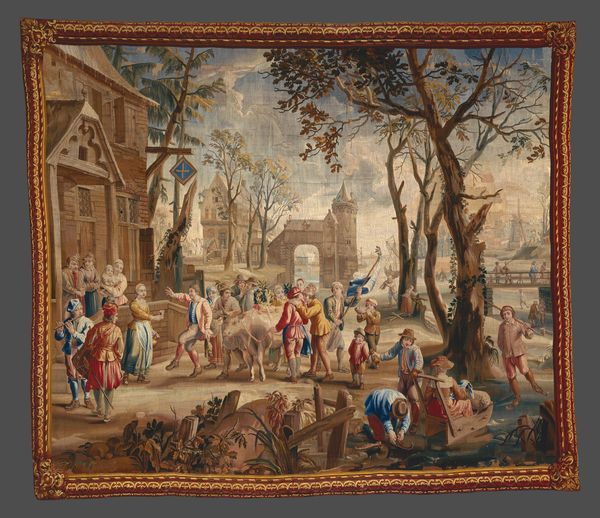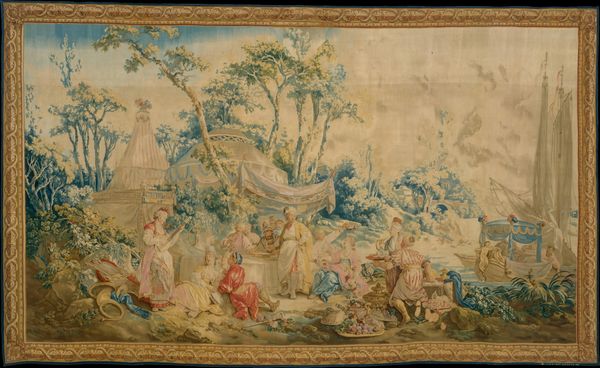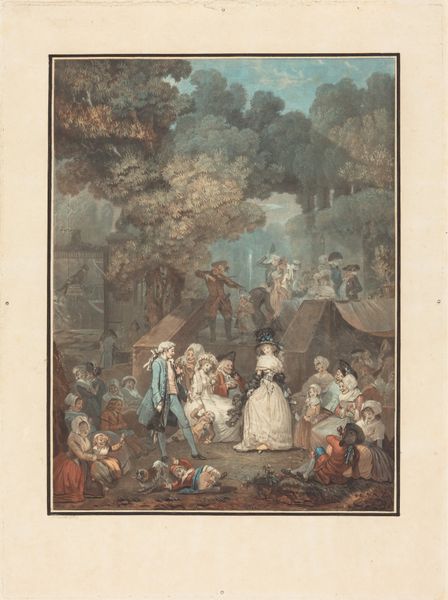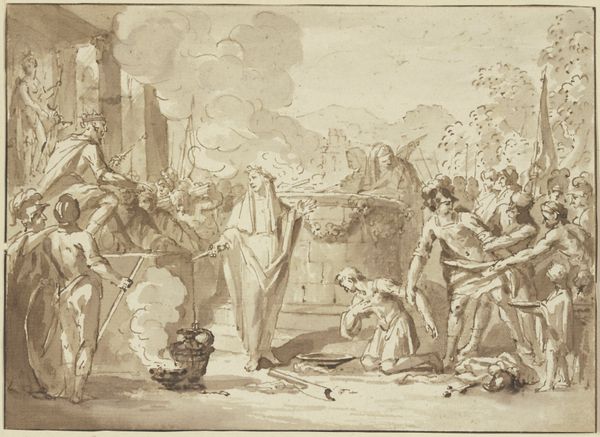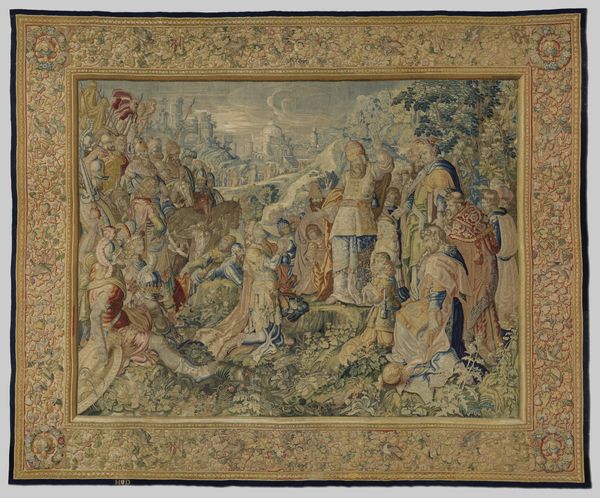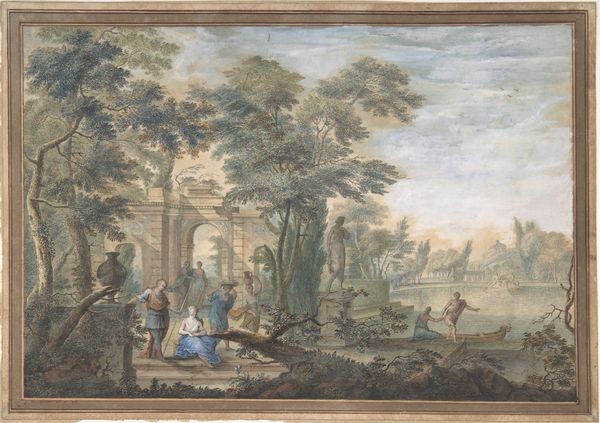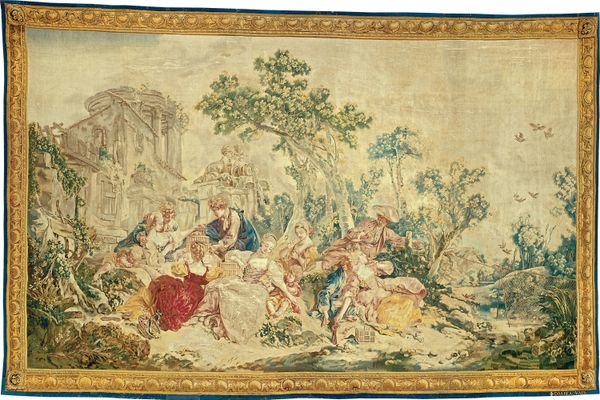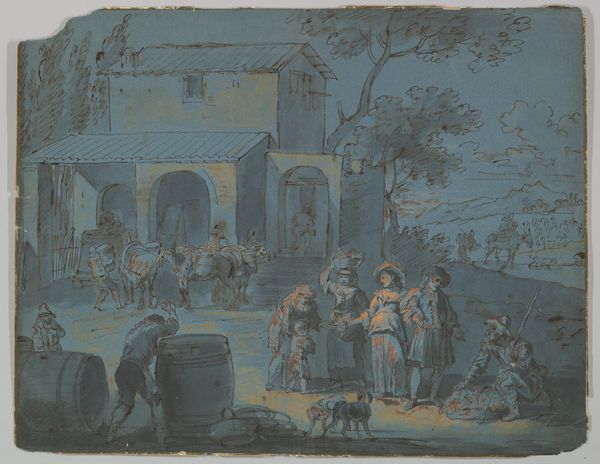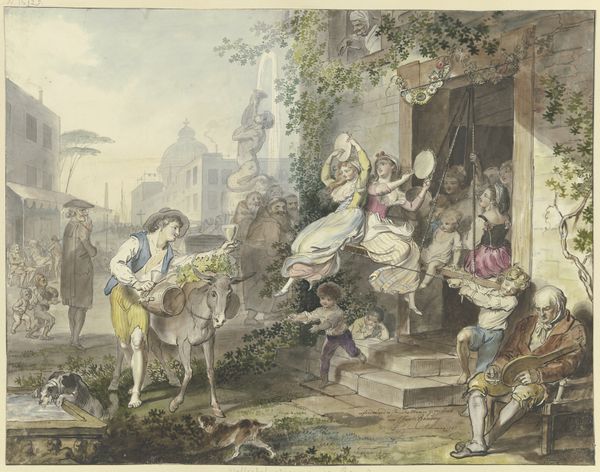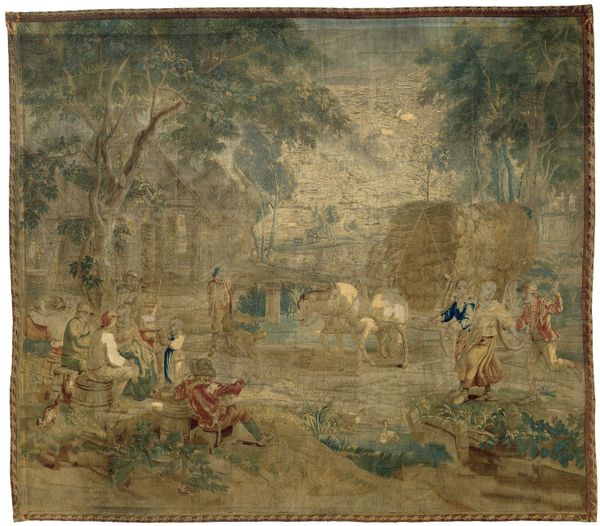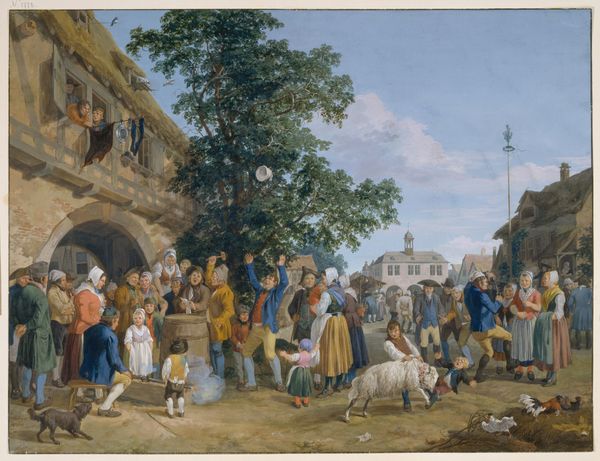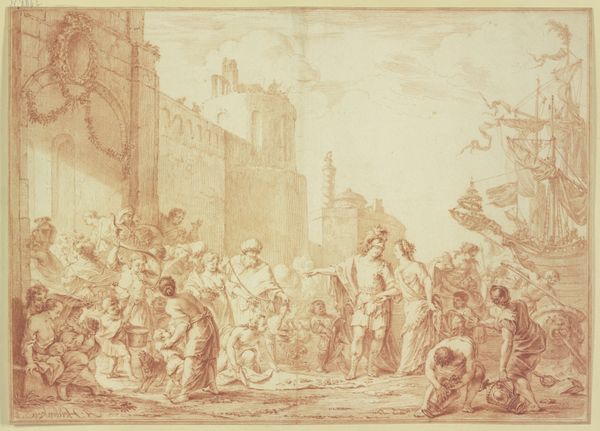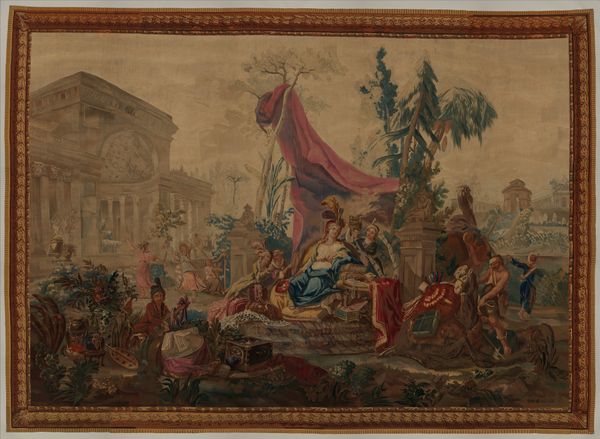
The Outdoor Market, from Village Festivals 1775 - 1789
0:00
0:00
weaving, textile
#
medieval
#
narrative-art
#
weaving
#
landscape
#
textile
#
genre-painting
Dimensions: 571.5 × 292.9 cm (224 7/8 × 115 3/8 in.)
Copyright: Public Domain
Curator: Ah, look at this wonderful piece. We're viewing "The Outdoor Market, from Village Festivals," a tapestry crafted between 1775 and 1789. The creator is Etienne Jeaurat, and we are privileged to have it here at The Art Institute of Chicago. Editor: My immediate reaction is that it's quite a bustling composition, isn't it? A panorama of figures interwoven with buildings creates this kind of decorative plane. It’s somewhat desaturated overall. Curator: Yes, Jeaurat captures that vibrancy of a marketplace. Tapestries, beyond mere decoration, often reflect prevailing societal values and narratives. Marketplaces were incredibly symbolic, weren't they? Hubs of news, gossip, social exchange… the heart of community. Editor: Certainly, the very materiality of it—woven thread upon woven thread—establishes the framework. The texture brings to mind visual patterns, perhaps intending to establish narrative as pattern. I observe how this pattern establishes balance, too. Curator: I agree! Consider the clothing, for instance; its representation communicates status, perhaps, but also continuity and identity, harking back to traditions and even hinting at long-forgotten allegiances or local legends. Each color, each scene is telling a micro-story of those medieval archetypes of the marketplace! Editor: Precisely. In addition to how color communicates these different aspects of society and daily life, note also the spatial rendering—the architectural structures set a compositional limit on these swirling bodies, effectively using Euclidean geometry as counterpoint to the social dynamic itself! I am noticing that I don’t believe this is an actual medieval town—there is too much sophistication for the historical period. Curator: Intriguing… it begs the question then: Is this really a medieval marketplace? Maybe Jeaurat meant something else; that is to say, perhaps the artwork conveys our continued reliance on community, on gathering. Perhaps a gentle echo. Editor: Exactly. And it might seem counterintuitive to interpret it with such formal detail, but to do otherwise seems like a wasted opportunity! Ultimately, the composition invites us to question relationships. Curator: This is true. It's like that village crier calling out across generations; each figure holds a piece of this universal, timeless narrative of exchange and collective life. What a story woven into threads.
Comments
No comments
Be the first to comment and join the conversation on the ultimate creative platform.
